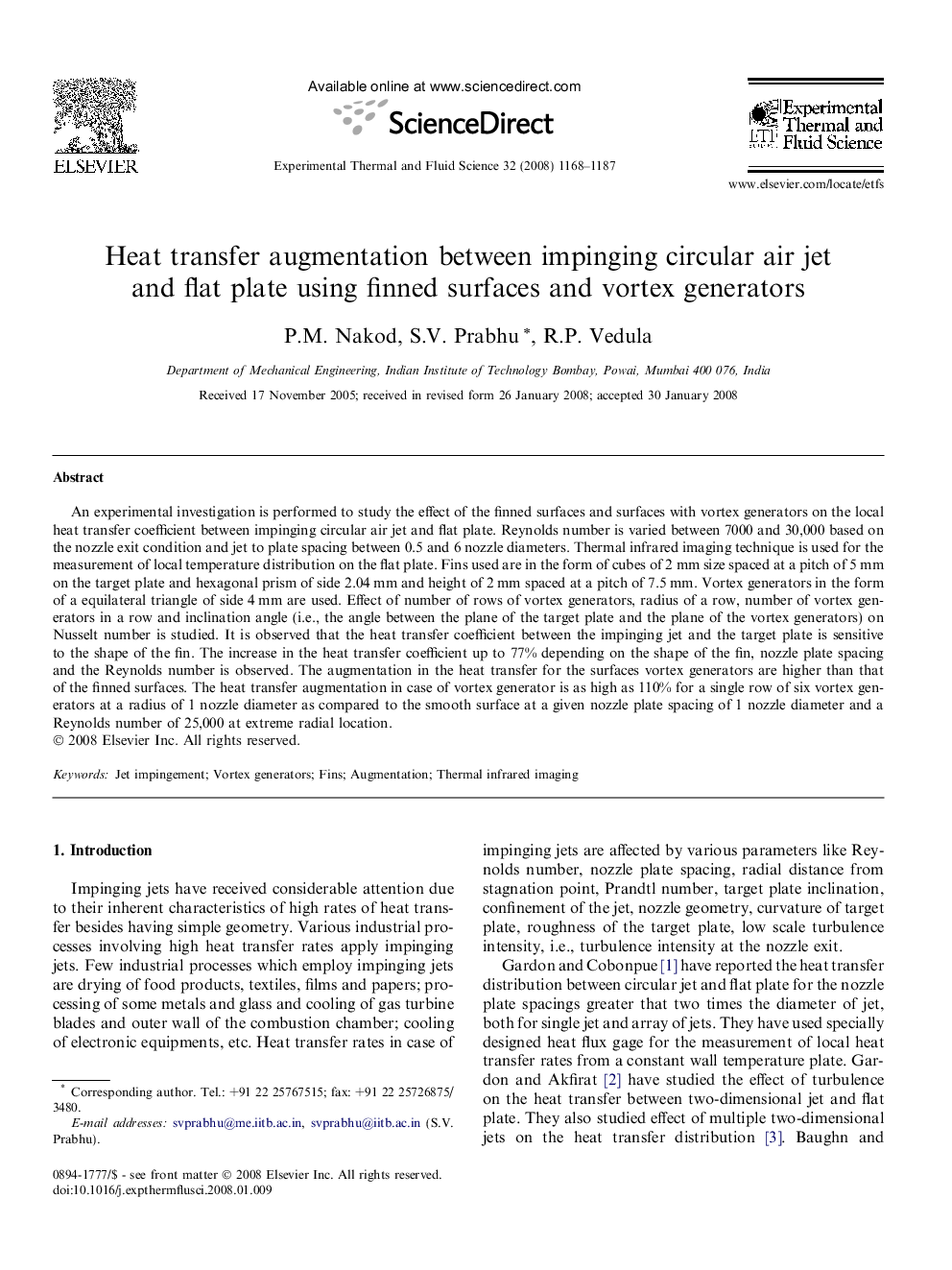| Article ID | Journal | Published Year | Pages | File Type |
|---|---|---|---|---|
| 652659 | Experimental Thermal and Fluid Science | 2008 | 20 Pages |
An experimental investigation is performed to study the effect of the finned surfaces and surfaces with vortex generators on the local heat transfer coefficient between impinging circular air jet and flat plate. Reynolds number is varied between 7000 and 30,000 based on the nozzle exit condition and jet to plate spacing between 0.5 and 6 nozzle diameters. Thermal infrared imaging technique is used for the measurement of local temperature distribution on the flat plate. Fins used are in the form of cubes of 2 mm size spaced at a pitch of 5 mm on the target plate and hexagonal prism of side 2.04 mm and height of 2 mm spaced at a pitch of 7.5 mm. Vortex generators in the form of a equilateral triangle of side 4 mm are used. Effect of number of rows of vortex generators, radius of a row, number of vortex generators in a row and inclination angle (i.e., the angle between the plane of the target plate and the plane of the vortex generators) on Nusselt number is studied. It is observed that the heat transfer coefficient between the impinging jet and the target plate is sensitive to the shape of the fin. The increase in the heat transfer coefficient up to 77% depending on the shape of the fin, nozzle plate spacing and the Reynolds number is observed. The augmentation in the heat transfer for the surfaces vortex generators are higher than that of the finned surfaces. The heat transfer augmentation in case of vortex generator is as high as 110% for a single row of six vortex generators at a radius of 1 nozzle diameter as compared to the smooth surface at a given nozzle plate spacing of 1 nozzle diameter and a Reynolds number of 25,000 at extreme radial location.
